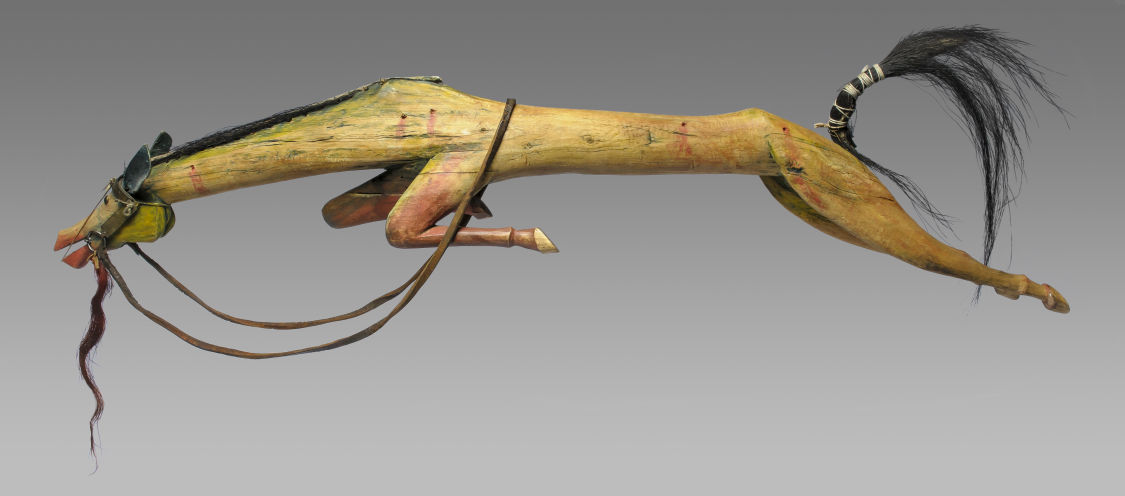|
|
Post by Diane Merkel on Oct 17, 2015 21:36:06 GMT -5
 This article celebrates the artwork of No Two Horns and provides some biographical information about him: A cousin of Sitting Bull, No Two Horns told how he was born at the mouth of the Grand River in what is now South Dakota; that he first saw a white man at age 11; first went to war against the Assiniboine at age 14; first hunted the buffalo at age 17, in winter, when his hands froze to the bow. He first saw a rifle at age 19. A bear was the first animal he ever killed with a rifle of his own; before that he had shot them with a bow and arrow from horseback. He told that during his warrior years, he fought in nearly 40 battles against the Assiniboine, Chippewa, Crow and finally against the U.S. Army, including the biggest battle of them all in Plains history – Little Bighorn. He used a rifle at the Little Bighorn that he had taken from the Crows in battle two years before, in 1874. Article: www.capjournal.com/news/bounding-home-masterpiece-of-plains-indian-sculpture-returns-to-south/article_85933c9a-6e38-11e5-828e-1f6bf2faad8b.html |
|
rocka
New Member

Posts: 4 
|
Post by rocka on Feb 19, 2021 20:45:14 GMT -5
Hé Núŋpa Waníča (No-Two-Horns) “Without Both Horns”, Hunkpapa, was a cousin of Sitting Bull and fled with his band to Canada after the battle of Little Big Horn. He later returned with Sitting Bull and his people when they came back to the United States to surrender at Fort Buford in 1881.
His other name was, Kimímela Ská, White Butterfly. No-Two-Horns was born in 1852 at the mouth of the Grand River in what is now South Dakota. His father was Ištá Sapá, Black Eyes, who was also known as Wasú Šá, Red Hail (born in 1832).
In the Little Bighorn battle, No Two Horns’s blue roan suffered seven bullet wounds before collapsing, but not before carrying him to victory over the army of General Custer. For the rest of his life, until his death in 1942, he portrayed this event in colorful drawings and paintings, as well as sculptures. No Two Horns was a master artist of the Plains Indian pictographs and many of his carvings serve as evidence of a graceful careful hand.
No Two Horns also kept his tribe’s winter count, a collection of pictographs recording 137 years of Lakota history.
|
|